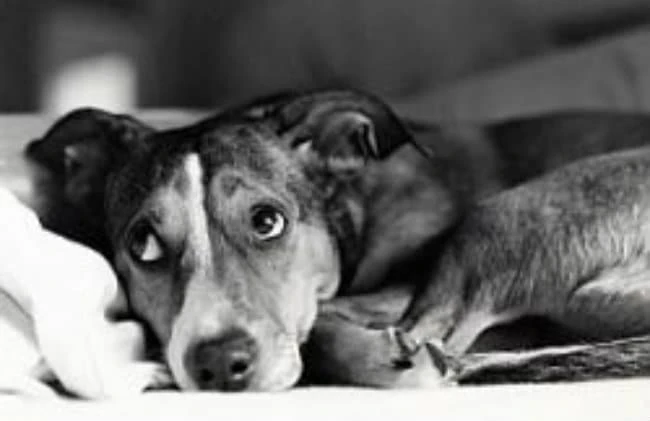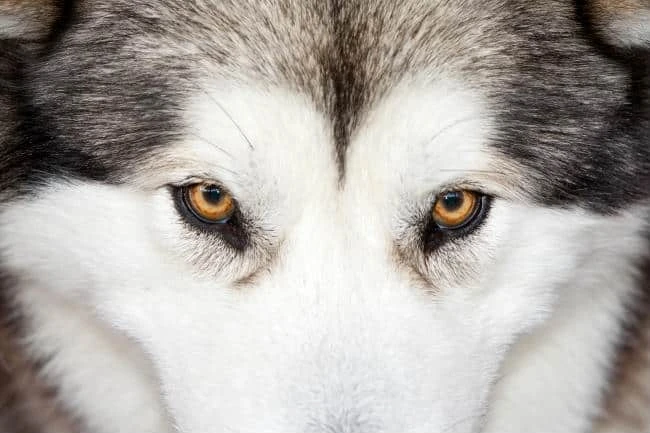Dog Allergy Symptoms, Treatment, Skin Allergies in Dogs
Dog Allergy Symptoms

A guide to dog allergy symptoms, its causes and the signs to look out for… There are many causes of allergies in dogs ranging from food, Fleas, Ticks, Bacteria, Dust, Smoke, Pollen, Mites and lots more (too many to mention in one article)! However, we have covered most of the causes and the best treatment to give your pooch some relief (because an allergic reaction can lead to some very unpleasant symptoms). Anyway lets get started…
Causes of Dog Allergy Symptoms
Dog allergy symptoms can occur suddenly and may affect your dog or puppy in a variety of ways. The main culprits for allergies in dogs are caused by certain ingredients in food (food allergies actually account for about ten percent of allergic reactions in dogs) with the most common symptom excessive itching and scratching. It is actually estimated by some experts to be the third most common cause of allergic reactions in dogs after ‘Atopy’ and reactions to Flea bites.
Another very common cause of allergies in dogs and puppies is due to ‘Atopy’, this refers to allergic reactions caused by inhalants (i.e. dust, smoke etc). ‘Atopy’ and Dog Food linked together account for approximately twenty percent of dog allergy symptoms.
Allergens (and Antigens) can come from a variety of sources including repeated exposure to…
- Protein (seen in some food products i.e. meat, eggs and wheat).
- Meat
- Eggs
- Wheat
- Pollen seen in flowers and plants (Atopy)
- Mold (Atopy)
- Spores (Atopy)
- Preservatives in food
- Fillers and food additives
- Food colorings and dye
- Vaccines and also drugs
- Certain medications
- Smoke (Atopy)
- Mildew (Atopy)
- Dust Mites Atopy)
- Fleas
- Bacteria
The process of an allergic reaction is a very complicated process and is actually not completely understood by experts. The most common theory is that your dogs body (antibodies) overreacts to the allergen or antigen. Dog allergy symptoms come in five forms listed below.
Flea Allergies – This can be localized or generalized (i.e. the affected area can be in just one area all over the body). The problem will normally start straight from the first Flea bite. The affected area will be extremely itchy with your dog frantic to scratch that area. This can cause redness, swelling and loss of hair either in patches in one area or all over the body.
The actual Flea is not the problem it is the saliva that the Flea passes into your dog through the initial bite. If the problem is so severe with an extreme reaction your dog maybe left with open sores and infected areas due to the constant scratching. It is also possible for your dog to develop a secondary infection through the initial bite and your dog’s reaction to it. If your pet has Fleas then it is also possible that you may get bitten or experience a reaction. Flea bites are known to cause FAD (Flea Allergic Dermatitis), Anemia and also pass on Tapeworms.
Bacterial Allergies – The most common cause is through a Staph Infection. The Staphylococcus bacteria is present on your dog’s skin and in most cases will not cause any problems. However, in some scenarios your dog may develop an allergic reaction to the Staph bacterium. The most common symptom of this allergy is through hair loss and lesions appearing on the skin. The lesions and affected areas look similar the effects of Canine Ringworm.
Atopy – Dog allergy symptoms caused by ‘Atopy’ (inhalants) is one of the most common causes of allergic reactions in dogs. There are so many different possible inhalants that it is impossible to list them all but they most of them will affect humans just as much as they affect your dog or puppy. Common inhalants can include…
- Dust
- Tree pollen (Oak, Cedar and Ash).
- Grass pollen
- Mold
- Mildew
- Smoke (caused by Cigarettes can also cause Lung Cancer).
- Dust Mites
With inhalant (Atopy) related allergies the most common reaction in humans is respiratory problems such as Hay Fever. However, in dogs and puppies the most common reaction to inhalant related allergies is excessive itching, scratching, licking and sometimes attempts to lick he skin. You will often notice a dog that has had an allergic reaction to inhalants because not only will your dog frantically itch but the saliva from your dog’s mouth where he has been attempting to relieve the itching has turned the color of the hair into a orange color.
Another symptom of ‘Atopy’ is your dog rubbing his face against objects to relieve the itching. You may notice that the skin is affected all over the body even under the armpits, groin and inside of the legs.
Dog allergy symptoms related to ‘Atopy’ will sometimes cause respiratory problems but this is a more common occurrence in humans with the onset of Hay Fever and Asthma.
One of the most effective treatments for Atopy related allergies is the use of Hypersensitisation. This is the process of your dog being slowly being introduced to certain antigens (that your Vet has discovered through skin tests that are causing the problems). This is achieved through controlled injections of the antigen – your dog’s body and antibodies will then learn to respond appropriately to the antigen. This method of treatment has been seen to sometimes cure the allergy that your dog experiences and if not cure it substantially reduce the itching and scratching.
Hypersensitisation is often the last treatment for dog lallergy symptoms with the most common treatment starting with antibiotics, medicated shampoo, antihistamines and anti-inflammatory medications such as corticosteroids.
Contact Allergy – This type of reaction is actually very rare and is caused by your dog having a reaction to something that has come into contact with his skin. Common culprits can include Flea collars, wool, synthetic materials, shampoo and some plastics. Your dog’s bedding should be examined as this might be a cause – it might also be due to the washing liquid you use to clean the bedding.
The most common treatment for contact dog allergy symptoms is thorugh the administering of medicated shampoo, corticosteroids, antihistamines and cortisone creams.
Dog Food Allergies – As we have previously mentioned the food that your dog has been exosed to over a period of time can cause a nasty reaction in your dog. It is impportant to distinguish between a food intolerance as opposed to an allergy. With food intolerance you will normally get symptoms of diarrhea and an upset stomach.
If yur dog is allergic to a specific dog food then you should expect to see similar symptoms to those caused by ‘Atopy’, Contact and other causes i.e. skin problems and constant itching and scratching. The most common causes of dog food allergies include beef, dairy products, soy, wheat, chicken eggs, lamb, fish and chicken – remember the cause are the proteins in the food and your dogs repeated exposure to them. Common symptoms can include…
- Frantic itching and scratching
- Hair loss
- Recurrent ear infections
- Recurrent yeast infections
- The itchy skin will normaly affect certain areas around the face, legs, feet, armpits and around the anus.
- Look for discolored hair where the saliva has caused the hair to turn orange or red.
- Skin allergies caused by food will ofen reoccur after treatment has stopped most notably when antibiotics are discontinued.
- Your dog may also poop more often. Some studies have indicated that a dog with food allergy will poop on average three times a day but a dog that is allergy free will poop one and a half times a day.
Well thats our guide to dog allergy symptoms – if you have any concerns please speak to your vet for advice.
Return from Dog Allergy Symptoms to List of Hypoallergenic Dogs
Return from Dog Allergy Symptoms to Dog Obedience Training Home





